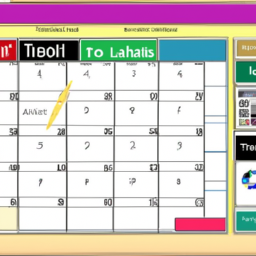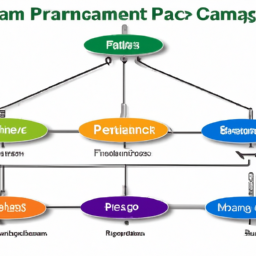Imagine you are embarking on a project that requires collaboration with individuals from diverse cultural backgrounds. As you step into this global arena, you are faced with the challenge of navigating cultural differences in project communication. Just like a skilled sailor who charts a course through treacherous waters, you need to develop the tools and strategies to successfully navigate the complexities of cross-cultural communication.
In project communication management, cultural awareness plays a vital role in fostering effective collaboration and achieving project success. Understanding different communication styles, overcoming language barriers, adapting to cultural norms and etiquette, and building trust and collaboration across cultures are all essential aspects of navigating cultural differences in project communication.
This article will explore the importance of cultural awareness in project communication and provide practical tips for communicating effectively in a multicultural environment. By embracing cultural diversity and leveraging it as a strength, you can foster understanding, cooperation, and ultimately achieve project success in today’s globalized world.
Key Takeaways
- Cultural awareness is crucial in project communication
- Understanding different communication styles is important
- Nonverbal communication plays a significant role in conveying messages
- Active listening is key to effective communication
Importance of Cultural Awareness in Project Communication
Cultural awareness is crucial in project communication, as it helps build connections and fosters understanding among team members from diverse backgrounds. By having a deep understanding of cultural sensitivity and practicing intercultural communication, you can effectively navigate the challenges that arise when working with a multicultural team.
Being culturally aware means being mindful of different communication styles, norms, and values, allowing you to adapt your approach and avoid misunderstandings. It also involves being open-minded and respectful towards different perspectives and ways of doing things.
Understanding different communication styles is an essential aspect of project communication, as it enables you to tailor your message to meet the needs of your team members. This understanding will help you to effectively collaborate and achieve project success.
Understanding Different Communication Styles
Understanding different communication styles can be challenging, but it’s crucial to bridge the gap and foster effective collaboration.
In project communication management, it’s important to recognize that communication goes beyond just words. Nonverbal communication plays a significant role in conveying messages, such as body language and facial expressions. Being aware of different cultural cues can enhance understanding and prevent misinterpretations.
Additionally, active listening is key to effective communication. It involves fully focusing on the speaker, avoiding distractions, and providing feedback to ensure comprehension. By actively listening, you can better understand the nuances of different communication styles and adapt your own approach accordingly.
With this understanding and skillset, you can overcome language barriers and promote effective communication in project management without alienating team members or causing misunderstandings.
Overcoming Language Barriers
Breaking down language barriers is essential for fostering effective collaboration and building strong connections within diverse teams. When working with individuals who speak different languages, it’s important to bridge gaps in communication through language interpretation services.
These services enable team members to understand and be understood, ensuring that everyone is on the same page. Additionally, using visual aids such as diagrams and charts can help convey information in a way that transcends language barriers.
Another effective strategy is to encourage team members to learn basic phrases in each other’s languages, which can foster a sense of inclusivity and create a more welcoming environment. By taking these steps, teams can overcome language barriers and promote effective communication.
Moving forward, it’s important to also consider adapting to cultural norms and etiquette, which will be discussed in the next section.
Adapting to Cultural Norms and Etiquette
Embrace the beauty of diversity by immersing yourself in the vibrant tapestry of cultural norms and etiquette. Cultural sensitivity is crucial when working with teams from different backgrounds. Understanding and adapting to cultural norms and etiquette can help prevent misunderstandings and foster effective communication.
Non-verbal communication plays a significant role in many cultures, so it’s essential to be aware of gestures, body language, and personal space preferences. For example, in some cultures, maintaining direct eye contact is a sign of respect, while in others, it may be considered rude or confrontational. By being mindful of these differences and adjusting your communication style accordingly, you can establish rapport and build trust across cultures.
This will lay a solid foundation for effective collaboration and successful project outcomes. Transitioning into the next section, building trust and collaboration across cultures requires a deeper understanding of cultural values and communication styles.
Building Trust and Collaboration Across Cultures
Developing strong relationships and fostering effective teamwork across diverse cultures requires actively building trust and collaboration. It is essential to understand that building relationships takes time and effort, especially when working with people from different cultural backgrounds. To foster inclusivity and create a harmonious work environment, consider the following:
-
Practice active listening: Show genuine interest in what others have to say and make an effort to understand their perspectives.
-
Embrace diversity: Appreciate and value the unique contributions that individuals from different cultures bring to the team.
-
Encourage open communication: Create a safe space where team members feel comfortable expressing their thoughts and ideas.
-
Establish common goals: Set clear objectives that everyone can work towards, fostering a sense of unity and purpose.
By actively building trust and collaboration, you can lay the foundation for effective project communication in a multicultural environment. Transitioning into the next section, let’s explore some tips for achieving this successfully.
Tips for Effective Project Communication in a Multicultural Environment
To excel in a multicultural work environment, you must actively cultivate a deep understanding of diverse perspectives, allowing you to navigate and bridge gaps in effective collaboration. Cross-cultural collaboration requires effective communication strategies that can help overcome language barriers, differing communication styles, and cultural norms. Here are some tips to enhance project communication in a multicultural environment:
-
Be mindful of language: Use clear and concise language, avoiding jargon and idioms that may not be understood by everyone. Encourage open communication and ask for clarification when needed.
-
Listen actively: Pay attention to verbal and non-verbal cues, and show respect for different communication styles. Actively listen to understand different perspectives and avoid making assumptions.
| Effective Communication Strategies | |
|---|---|
| 1. Be mindful of language | 2. Listen actively |
By implementing these strategies, you can foster effective project communication and build strong relationships in a multicultural environment.
Frequently Asked Questions
How can cultural awareness impact project communication management?
Cultural awareness is crucial in project communication management as it directly impacts the effectiveness of intercultural communication. By embracing cultural sensitivity, you can navigate potential misunderstandings and adapt your communication style to meet the needs of diverse team members.
Being aware of cultural differences helps you avoid misinterpretations, build trust, and foster better collaboration. Ultimately, this leads to improved project outcomes and a more inclusive work environment.
What are the different communication styles that can be encountered in a multicultural project environment?
In a multicultural project environment, you’ll encounter a delightful array of communication styles. It’s like a cultural buffet, except instead of food, it’s different ways of expressing oneself.
From the direct and assertive style of the Western world to the more indirect and harmonious approach of Asian cultures, cultural sensitivity is key. And let’s not forget about nonverbal communication, where gestures, facial expressions, and even personal space can vary greatly.
It’s a fascinating dance of understanding and navigating these differences.
How can language barriers be overcome in project communication management?
To improve understanding and overcome language barriers in project communication, utilize technology. Use translation tools, such as Google Translate, to convert messages into the recipient’s native language.
Additionally, encourage team members to use simpler language and avoid jargon. Provide training sessions on effective communication strategies and cultural sensitivity.
Utilizing video conferencing platforms can also help by allowing for visual cues and non-verbal communication. By implementing these techniques, you can ensure effective communication in multicultural project environments.
What are some cultural norms and etiquette that should be considered when working on a multicultural project?
Consideration of cultural norms and etiquette is crucial when managing diverse communication styles in a multicultural project. To navigate cross-cultural communication successfully, employ strategies such as active listening, empathy, and respect for different perspectives.
Understand and adapt to cultural nuances, such as communication styles, non-verbal cues, and hierarchy. Foster an inclusive environment where everyone feels valued and heard.
By acknowledging and embracing cultural differences, you can build strong relationships and promote effective collaboration.
How can trust and collaboration be built across different cultures in project communication management?
Building cross-cultural relationships requires effective communication strategies. To foster trust and collaboration across different cultures, it’s crucial to prioritize active listening and open-mindedness.
Encourage team members to share their perspectives, ideas, and concerns, creating an inclusive environment. Utilize technology to bridge language barriers and consider cultural nuances when communicating, such as using appropriate greetings and avoiding misunderstandings.
By promoting understanding and respect, you can cultivate a strong foundation for successful project communication management in multicultural settings.
Conclusion
In conclusion, navigating cultural differences in project communication is crucial for success in a multicultural environment. By understanding different communication styles and adapting to cultural norms, you can build trust and collaboration across cultures.
Just like a diverse group of musicians coming together to create a harmonious melody, effective project communication requires the blending of different perspectives and approaches.
Remember to be mindful of cultural awareness, language barriers, and etiquette, and you’ll be well-equipped to navigate the intricacies of project communication in a multicultural setting.



























